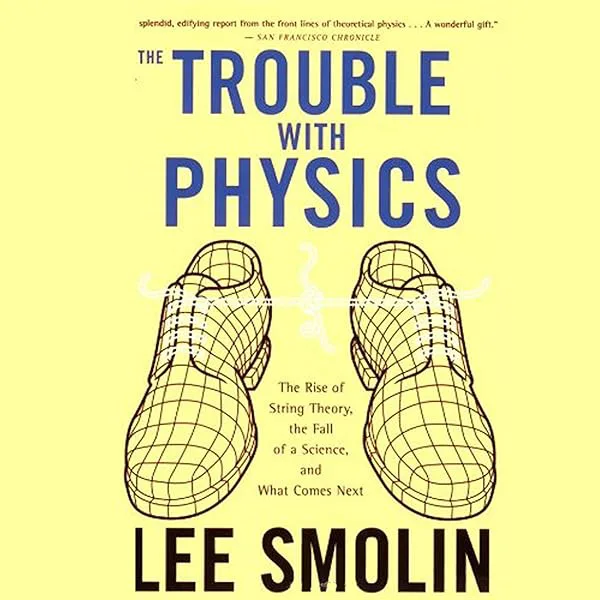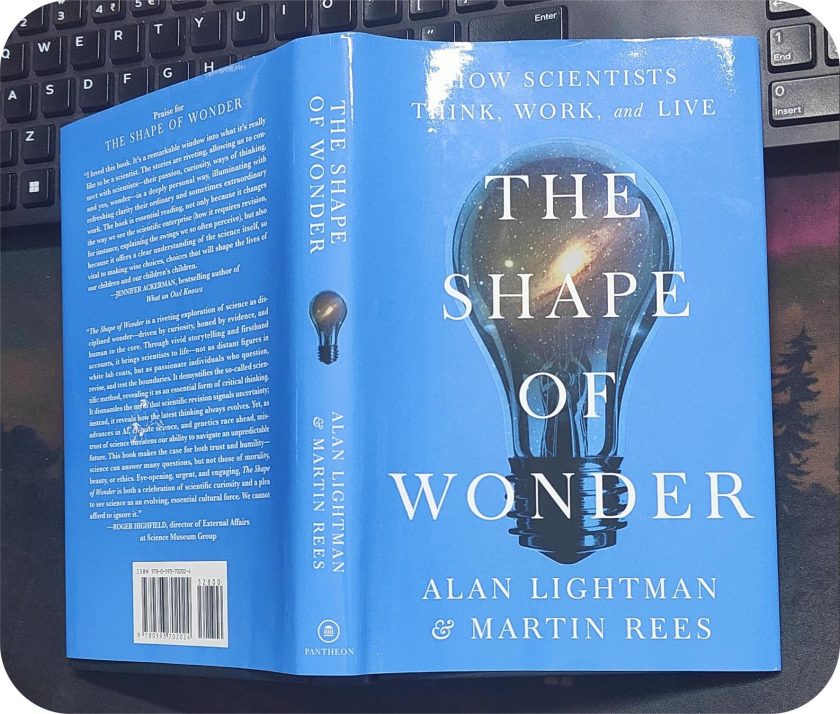
“The Trouble with Physics: The Rise of String Theory, the Fall of a Science, and What Comes Next” by the theoretical physicist Lee Smolin delves into the history of physics, starting from Copernicus. The book also explores the contemporary state of physics research. It was written in 2006, and at that time, string theory had significant influence in the field.
Smolin, right at the beginning, frames five major unresolved challenges in physics. These include:
- Quantum Gravity: Combine general relativity and quantum theory into a unified framework. In his latter book, Three Roads to Quantum Gravity, he did try to solve this conundrum.
- Foundations of Quantum Mechanics: Resolve issues in the foundations of quantum mechanics. He did this by either clarifying the existing theory or by developing a new, coherent one.
- Unified Theory: Determine if particles and forces can be unified in a single theory. He did this by explaining them as manifestations of a fundamental entity.
- Free Constants: Explain why the free constants in the standard model of particle physics have the specific values observed in nature.
- Dark Matter and Dark Energy: Provide an explanation for dark matter and dark energy. Or in case they don’t exist, understand how and why gravity is modified on large scales.
The author not only dives into the above problems, but he also lay emphasizes on physicists’ pursuit of unifying theories and objects for a clearer and, hopefully, simpler grasp of the universe.
The book seems to have an unbiased view on both failed and successful ideas a.k.a. paths taken by brilliant minds with revolutionary ideas. These ideas in totality shaped modern physics that we study and explore today.
Two Failures mark the Beginning
Smolin starts off with two failures that mark the beginning. The initial one suggests that sound and light share a common origin. The idea consequently, gives rise to the concept of aether. Aether is believed to be the medium through which sound and light travel.
Transitioning to planetary motion, he delves into the theory of circles within circles, known as epicycles.
There’s even a discussion about Kepler’s idea linking the orbits of the five known planets to the five Platonic solids. However, with each theory, the author meticulously surfaces how “experimentation” and “evidence” debunked them. Eventually with the progression of time, these theories no longer stood up to scrutiny.
Notable Unifications
Moving forward, the book highlights notable unifications in the scientific realm. These include:
- Newton’s ground breaking concept of unification of motion and rest. He showed how objects move or stay still under the same set of rules.
- Bruno contributes by unifying the sun and stars. Thus, revealing their shared identity. It was quite a revolutionary concept because the prevailing view was that the sun and stars were fundamentally different in nature. This led to his condemnation by the Catholic Church.
- Faraday’s insight unifies forces (electricity and magnetism) and fields, showing their inherent connection. He proved that electric currents create magnetic fields, and changing magnetic fields induce electric currents.
- Maxwell steps in with a significant unification, merging the realms of electricity and magnetism. He provided a mathematical foundation for understanding the behavior of electromagnetic waves.
- Enter Einstein, orchestrating double unifications: space and time in special relativity, and acceleration and gravity in general relativity.
He showed that space and time are interconnected and that measurements of space and time intervals can vary depending on the observer’s motion.
His second theory unified the concepts of acceleration and gravity by describing gravity as the curvature of spacetime caused by mass and energy.
Although these concepts are intricate, Smolin has beautifully crafted them for a broad audience.

Knot Theory
I’d like to add an interesting side note that the author introduces us during the above discussion.
Once the unification of electricity and magnetism was done, a hypothesis emerged. According to which, magnetic lines could be knotted in different ways. And each knot linked to a specific atom.
The idea, what if one knot equalled another became a focal point of interest. Although, knots in the context of atomic structure were found to be incorrect, it was, however, able to spark the creation of “knot theory” as a branch of mathematics.
Knot theory not only provides fascinating and abstract area of study within mathematics, it also has connections to the study of DNA, where the structure of DNA can be modeled as a kind of knot.
Dynamic Process of Scientific Inquiry and Discovery
Coming back to the idea of unification, the author suggests, it not only enhanced understanding but also brought forth unforeseen questions. And each question gave rise to testable hypotheses.
The validity and usefulness of each theory were then measured through these hypotheses.
Therefore, unifying theories not only answer existing questions but spark new ones. This continuous cycle of inquiry fuels ongoing exploration and deepens our understanding.
The Dawn of String Theory
Smolin concludes the initial section of the book by examining physics as string theory emerges. But before talking about the string theory, he introduces us with fundamental quantum theory, symmetry, and spontaneous symmetry breaking.
The discussion also includes the contemporary quest for Higgs boson.
Incorrect theories like SU(5) and the unsuccessful pursuit of proton decay are highlighted to emphasize the role of experiments in verifying theories.
Subsequent chapters touch upon supersymmetry, cosmology, supergravity, and quantum gravity theories. The focus on these chapters remains on how experiments serve as the litmus test for the accuracy or inaccuracy of scientific theories.

String Theory Streamlined into M-Theory
String theory, according to Smolin, started as an overlooked concept but it gradually evolved into the dominant force in particle physics over the past two decades. He explains the notion that everything consists of tiny vibrating strings.
The (string) theory accomplishes the unification of all particles and forces. Thus, bridging the gap between quantum mechanics and relativity. Accordingly, it holds the potential to address significant challenges in physics, specifically Quantum Gravity and Unified Theory, mentioned right at the beginning of the book.
Initially, string theory had hundreds of versions. Later, it underwent a transformative process and was streamlined to just five versions.
A pivotal moment occurred when Edward Witten presented a unifying talk. Thus, bringing together all five theories into a cohesive framework. This significant achievement led to the emergence of M-Theory. This contribution solidified his reputation as a key figure in the advancement of theoretical physics.
String Theory lacks Testability
Subsequent chapters delve into intriguing aspects of string theory, including the exploration of extra dimensions that accompany it.
The author then explores the introduction of branes, an examination of string theory’s implications for black holes. In addition to an exploration of its connections to cosmological constants, dark energy, the anthropic principle, and the intricate relationship between supersymmetry and string theory.
Smolin then puts forward the idea that revolves around the persistent absence of experimentally verifiable or falsifiable results within string theory. Since it lacks testability, he argues, string theory cannot be regarded as a serious contender for a comprehensive theory of the universe within the realm of physics.

What if Special Relativity is Incorrect?
The ensuing section takes readers on a comprehensive tour of competing theories. And each accompanied by its distinct strengths and weaknesses. Notably intriguing is the exploration of the possibility: What if special relativity is incorrect?
Smolin dedicates thoughtful attention to various theories, including his own favoured concept, quantum-loop gravity.
String Theory Dominance in Physics
The next section talks about physics governed by string theory. Smolin calls it “the only game in town.” In his words,
“In the last fifteen years, there have been a total of three assistant professors appointed to American research universities who work on quantum gravity other than string theory, and these appointments were all to a single research group. Even as string theory struggles on the scientific side, it has triumphed within the academy.”
Appreciating String Theory, but Urging a Broader Physics Focus
This does not mean the author is all up against “String theory”, rather he appreciates it. And has actively contributed to it. He adamantly opposes it being the sole focus.
String theory, according to Smolin, has limitations, and he believes the physics community is deceiving itself by expecting it to solve profound questions on its own.
He identifies a two-fold problem:
- First, the research approach in string theory differs from the visionary thinking that gave rise to earlier groundbreaking theories.
- Second, he addresses the tenure system in the United States, which, in his view, exacerbates the issue. Physicists aiming for tenure must deliver results within five years. Thus, discouraging unconventional thinking, outside the established norms.
This pressure often directs researchers toward the safer route of working within the confines of string theory.
Smolin captures diverse sentiments in his documented conversations, revealing individuals who share similar concerns. Grants predominantly favor string theorists. Thus, creating a financial bias. This presents a formidable barrier to exploring alternative paths.

Takeaway
We might think the Smolin is against String theory, however, by the end of the book, we find he holds a genuine appreciation for it. However, as a final theory, he deems String theory a failure. He advocates against its dominance in the field. Rather emphasizes the need for equal consideration of alternative theories.
I think, prior generations of physicists – till Albert Einstein – approached physics with a curious mind. In contrast, the latter generation considered the mathematics of the former as sacred. Consequently, it resulted in the development of the Standard Model of Particle Physics.
Current physicists like Brian Greene and Michio Kaku, elevated the Standard Model to the next sacred status. They constructed a mathematical structure around it, which is almost unfalsifiable.
And mathematics is never wrong! So, String theory gained much popularity, with a potential to turn sci-fi into reality.
Over all, I thoroughly enjoyed reading The Trouble with Physics by Lee Smolin. The author’s unique perspective with added benefits such as references to original papers is super exciting and thought-provoking indeed.
For a comprehensive understanding, I’d recommend pairing this book with Brian Greene’s “The Fabric of the Cosmos”. Till then, keep reading and keep exploring 🙂




[…] Book Review: The Trouble with Physics by Lee Smolin […]